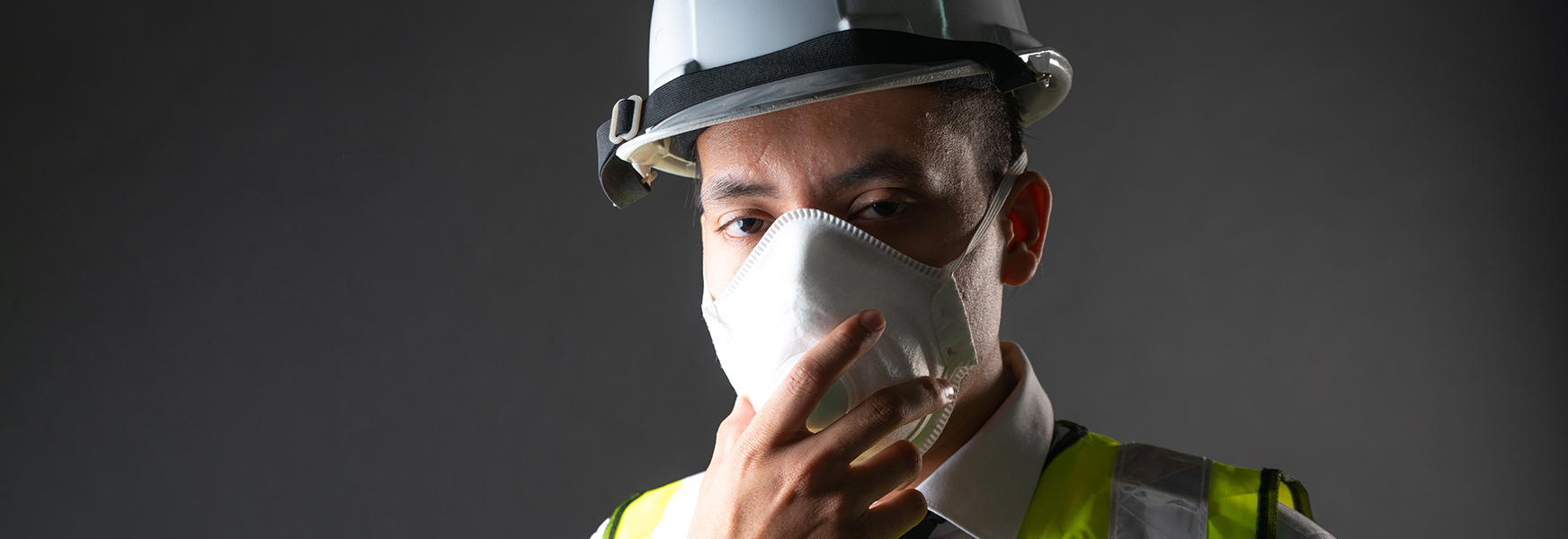Who Was That Masked Man? A “Fitting” Question These Days

Almost a decade ago, MEMIC posted a 2-part blog titled What do I really need for a Respiratory Protection Program?, which described the requirements of OSHA’s respiratory protection standard, 29 CFR 1910.134. These days, with surgical masks, N95 masks, and elastomeric respirators flying off of store shelves, this post discusses the element of respirator fit testing as it pertains to required versus voluntary respirator use and expands upon the previous blog information provided on fit testing as follows.
Fit Testing – In order to provide protection, the respirator must fit properly to the employee’s face. Contaminated air will be inhaled by the employee if a tight face piece seal is not maintained. Fit testing must be a core component of your respirator program when workplace conditions require respirator use. Your occupational medical provider should be able to assist you with this requirement. Review the standard for further information regarding when fit testing needs to be performed.
It’s important to note that prior to respirator fit testing, a medical evaluation to determine the employee’s ability to use a respirator, including a N95 mask (NIOSH approved), is required. Additionally, a medical evaluation is required for both required and voluntary respirator use as the respirator, itself, can pose as a hazard due to the increased strain placed on the cardiopulmonary system. The use of surgical masks and dust masks (that are not NIOSH approved) do not require medical evaluation and fit testing. Here’s the answer to “when fit testing needs to be performed” as contained in this excerpt from the OSHA respiratory protection standard.
Fit testing. This paragraph requires that, before an employee may be required to use any respirator with a negative or positive pressure tight-fitting facepiece, the employee must be fit tested with the same make, model, style, and size of respirator that will be used.
The distinction on voluntary versus required respirator use is based on conducting an exposure assessment. Respirators are permitted to be used voluntarily (without need for fit testing) when monitoring results determine contaminant concentration to be below the applicable OSHA permissible exposure limit (PEL). However, in this case, if the employer still requires respirator use as a matter of policy or an industrial hygienist advises the use of a respirator then fit testing is required.
Where it is determined that respirator use is required, then fit testing needs to be conducted initially before use, whenever a different respirator facepiece is used, when there are changes in the employee’s physical condition such as facial scarring, dramatic weight loss, dental changes, cosmetic surgery, and at least annually thereafter. OSHA requires that fit testing be performed using one of their accepted protocols for either qualitative or quantitative fit testing as described in Appendix A to the respiratory protection standard.
Lastly, in answer to the question posed in the title, Who Was That Masked Man?, well, that would be the Lone Ranger, a fictional character who fought outlaws in the American Old West. Judging from his name, he apparently practiced social distancing to a tee. "Hi-Ho, Silver! Away!"

